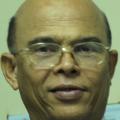Afghanistan accounted for 74 per cent of global illicit opium production in 2012 and remains the world's leading producer and cultivator of opium, while Myanmar is the world's second largest, accounting for 23 per cent of the land used for illicit poppy cultivation and 10 per cent of global opium production, says the UNODC.
Methamphetamine remains the top illicit drug threat in East and Southeast Asia, according to a UN Office on Drugs and Crime (UNODC) report -- "2012 Patterns and Trends of Amphetamine-Type Stimulants and Other Drugs, Asia and the Pacific" -- which made public in December 2012. Seizures of methamphetamine pills have increased more than five-fold since 2007, says UNODC, noting that amphetamine-type stimulants (ATS) are now either the number one or number two illicit drug of use in 13 of the 15 Asia Pacific countries surveyed in the report.
Myanmar remains the top source of illicit methamphetamine pills in East and Southeast Asia, and is also a source of crystalline methamphetamine, according to the UNODC report, which says that "significant quantities' of crystal meth are also produced in China, Indonesia, Malaysia and the Philippines, with "large-scale manufacturing' reported in Cambodia.
Reported methamphetamine use increased in 11 of 15 countries surveyed in East and Southeast Asia. The use of methamphetamine in pill form increased in all six countries that comprise the Greater Mekong Subregion -- Cambodia, China, Lao PDR, Myanmar (Burma), Thailand and Vietnam.
According to the UNODC Report, Myanmar (Burma) remains a major source of methamphetamine pills and opiates in Southeast Asia, most of which are manufactured in Shan State in the eastern part of the country. The report also says, for the first time, a crystalline methamphetamine manufacturing facility was seized in 2012. Large amounts of methamphetamine in pill and crystalline form originating from Burma continue to be seized in neighbouring countries.
The report also highlights that in the region, Myanmar (Burma) becomes one of the key sources of methamphetamine for a number of illicit drug markets in the past decade and a half or so. Most methamphetamine manufacture in Myanmar takes place in the mountainous and remote terrain of eastern Shan State, a region affected by drug trafficking, and political instability for much of the past six decades.
According to the UNODC, methamphetamine in pill and crystalline forms -- as well as heroin -- manufactured in the Shan State is trafficked overland and via the Mekong River, primarily to illicit drug markets in China, Thailand and, to a lesser but possibly increasing extent, Bangladesh (UNODC 2010). Methamphetamine is also smuggled from Myanmar into Yunnan province in southwestern China (NNCC 2012b). Some methamphetamine is also trafficked within Myanmar to supply the domestic drug market (UNODC 2010).
A report -- Journey of RCSS Anti-narcotic Activities - recently published by the Restoration Council of Shan State/Shan State Army (RCSS/SSA) says the tripartite cooperation with the government and the United Nations Office on Drugs and Crimes (UNODC) is most important in the ultimate solution of the long standing drug problem in the country, Shan Herald Agency for News (S.H.A.N.) reported on 19 August 2013.
The 82-page report in three languages - Shan, Burmese and English - consists of information before June 2013, previous to the RCSS/SSA leader Sao Yawd Serk made his historic trip to meet President Thein Sein in Naypyitaw, where he discussed the drug issue with the Central Committee for Drug Abuse Control (CCDAC).
"Although the eventual solution of the drug problem rests with the political settlement, the drug situation among the people is so severe, the solution for the drug problem should be sought simultaneously with the search for the political solution," reads its Shan version.
The Restoration Council of Shan State/Shan State Army had signed a 9-point agreement with the government and UNODC on 28 October 2012 for a pilot project in Mongnai and Mongpan Townships, in southern Shan State.
The grounds for hindrance of implementation was shortage of finances, while the UNODC had attributed to the continued warfare between the Burma Army and the SSA South despite the ceasefire signed on 2 December 2011, referring a top CCDAC official, SHAN said.
According to SHAN, the 82-page report says the RCSS/SSA's Anti Narcotics Committee (ANC) headed by Sai Harn, Sai Wun Kherh and Sai Hseng Wan, had held seven meetings with the U Ye Naing Win, head of the Shan State CCDAC, and U Win Tun, Chief of Shan State Police Force; 4 meetings with the UNODC's Burma representative Jason Eligh and a public consultation in Mongnai.
The ANC also conducted a trial assessment in Mongnai and Mongpan and a month long training on illicit drugs eradication based on the experiences on the royal projects in Thailand. The RCSS/SSA received a Golden Eagle Award conferred by Privy Councilor Gen Pichit Kullavanich on 23 June 2012 for "Good relationship and Cooperating Information in Anti Narcotics (Campaign)."
Most illicit methamphetamine manufacture in Shan State takes place in small, mobile facilities located in border areas near China and Thailand, primarily in territories controlled by active or former ethnic insurgent groups, many of which now operate as criminal syndicates rather than politically motivated insurgents, the report says.
Additionally, the UNODC 2012-report says that opium poppy cultivation has increased in Myanmar for six consecutive years. Opium poppy cultivation is at far lower levels than in the mid-1990s but has increased in the past six years. The total opium-poppy cultivation area in Myanmar in 2012 was estimated at 51,000 ha, a 17% increase from the 43,600 ha cultivation area in 2011. In 2012, potential opium production increased by 13% to 690 mt. During the year, an estimated 300,000 households were involved in opium poppy cultivation in Myanmar.
(Note: You can view every article as one long page if you sign up as an Advocate Member, or higher).





